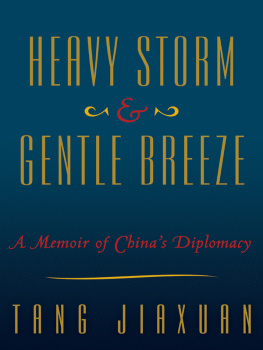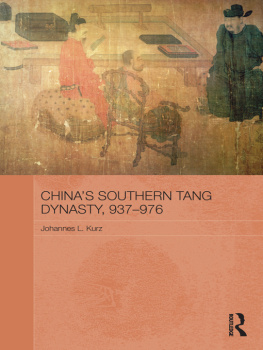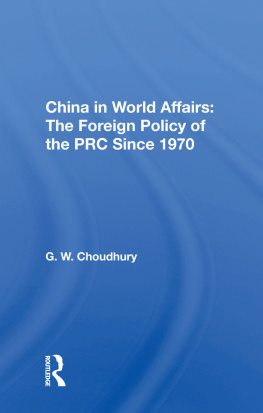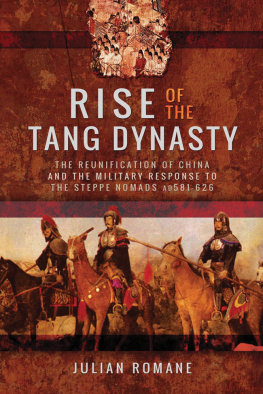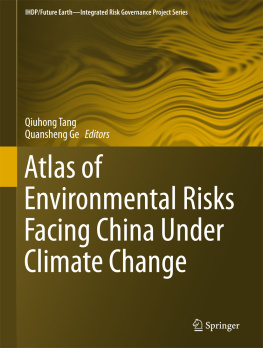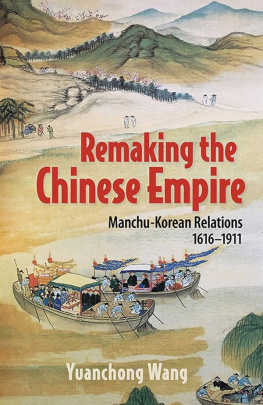JOSHUA FOGEL, GENERAL EDITOR
For most of its past, East Asia was a world unto itself. The land now known as China sat roughly at its center and was surrounded by a number of places now called Japan, Korea, Vietnam, Mongolia, and Tibet, as well as a host of lands absorbed into one of these. The peoples and cultures of these lands interacted among themselves with virtually no reference to the outside world before the dawn of early modern times. The World of East Asia is a book series that aims to support the production of research on the interactions, both historical and contemporary, between and among these lands and their cultures and peoples and between East Asia and its Central, South, and Southeast Asian neighbors.
S eries T itles
Crossing Empires Edge
Foreign Ministry Police and Japanese Expansionism in Northeast Asia
by E rik E sselstrom
Memory Maps
The State and Manchuria in Postwar Japan
by M ariko A sano T amanoi
Remote Homeland, Recovered Borderland
Manchus, Manchoukuo, and Manchuria, 19071985
by S hao D an
Tang China in Multi-Polar Asia
A History of Diplomacy and War
by W ang Z henping
the world of east asia
Tang China in
Multi-Polar Asia
A History of Diplomacy and War
Wang Zhenping
Copyright
2013 University of Hawaii Press
All rights reserved
Printed in the United States of America
18 17 16 15 14 13 6 5 4 3 2 1
Library of Congress Cataloging-in-Publication Data
Wang, Zhenping, author.
Tang China in multi-polar Asia : a history of diplomacy and war / Wang Zhenping.
pages cm. (The world of East Asia)
Includes bibliographical references and index.
ISBN 978-0-8248-3644-3 (cloth : alk. paper)
1. ChinaHistoryTang dynasty, 618907. 2. ChinaForeign relations
Asia. 3. AsiaForeign relationsChina. I. Title. II. Series: World of East
Asia.
DS749.35.W425 2013
951.017dc23
2013008413
University of Hawaii Press books are printed on acid-free paper and meet the guidelines for permanence and durability of the Council on Library Resources.
Series designed by Paul Herr, University of Hawaii Press.
Composited by Wanda China.
Printed by Sheridan Books, Inc.
To the memory of Denis Crispin Twitchett (19252006)
Contents
Acknowledgments
This book originated from a fax sent by Denis C. Twitchett on 11 September 1994. In this message, he invited me to contribute a chapter on Tang Chinas external relations to The Cambridge History of China, volume 4: Id like you to give your views on reciprocity and the tributary system; some ideas about what countries were important objects of foreign policy at different periods and how their treatment and relationship with Chang-an differed; what countries were primarily treated as potential military adversaries or allies, which were important trading partners, with something about the Shih-po shih [Shibo shi, Maritime Trade Commissioner], which you have already done, and on border markets. But above all on the actual mechanics of diplomacy, not only the reception of foreign embassies in Chang-an, but the dispatch of Tang envoys to other countries and on diplomatic correspondence I hope you may use this as a first stage towards a general book on Tang foreign relations.
These words pretty much defined the scope of my scholarly research and writing for the next fifteen years. During these years, Twitchett helped me shape the draft of my chapter, subjected it to his rigorous scholarly scrutiny, and suggested numerous revisions. Working on this chapter with him, I felt as if I were writing another doctoral dissertation under his supervision, which greatly broadened my intellectual horizon. But I did not immediately embark on the ambitious task of transforming the completed chapter into a book-length manuscript on Tang external relations. Instead, I attempted the more manageable project of revising for publication my Ph.D. dissertation on China-Japan relations during the Han-Tang period. During this process, I again received from Twitchett invaluable guidance and unfailing support that enabled me to address some of the issues that he had raised in 1994. This project resulted in the publication of Ambassadors from the Islands of Immortals by the University of Hawaii Press in 2005. Delighted to receive a copy of the book, Twitchett immediately prodded me to move on to work on the general book on Tang foreign relations. His sudden death in 2006, however, deprived me forever of the opportunity to present him the book that he had always wanted me to write. It is with wholehearted gratitude for his patient guidance and warm friendship that I dedicate this book to him.
Completion of this book would have not been possible without the generous and indispensable help from friends and colleagues in China, Japan, Hong Kong, Singapore, and the Unites States. Matsuura Akira, director of the Center for the Study of Asian Cultures at Kansai University, and Kida Tomoo at Rykoku University, both of whom have been my friends since the early 1980s, helped me acquire Japanese materials unavailable in Singapore. I thank them not only for their scholarly assistance, but also for their hospitality. They made me feel at home whenever I had the chance to visit Japan. Ho Koon Wan at Hong Kong Polytechnic University and Han Sheng at Fudan University helped with library research of Chinese materials. A visiting professorship arranged by Tao Demin, director of the Institute for Cultural Interaction Studies, allowed me to spend the last month of 2008 at Kansai University in order to use its extensive library collection. I thank Chen Yun and Bo Peilin at the Center for the Study of Asian Cultures for taking the time to show me around the library and for helping me access the materials that I needed to consult. During my stay at Kansai, I also had the opportunity to share my work with Shi Xiaojun at Himeji Dokky University, whose critical comments helped me revise some of the arguments in this book.
Cao Shuwen and Martinus J. Heijdra at the East Asian Library, Princeton University, offered much needed bibliographical assistance when I prepared the manuscript for final submission to the publisher. Their support made the timely submission of the book manuscript possible.
An intensive and time-consuming activity, scholarly writing requires a working environment conducive to research. I thank Ang Cheng Guan, head of Humanities and Social Studies Education at the National Institute of Education, Singapore, for his capable leadership that created such an environment, without which it would have taken me much longer to complete this book.
To Patricia Crosby and Ann Ludeman at the University of Hawaii Press, and Susan Stone, the copy editor, I offer my heartfelt thanks for the outstanding work they have done.
Last but not least, my debt goes to Ralph Meyer, a friend from my Princeton years. He meticulously edited the entire manuscript, and his many queries have greatly helped me to improve the books clarity and readability.
As readers will notice, this book does not address all important issues concerning Tang Chinas external relations, lacking thorough coverage of the actual mechanics of diplomacy in particular. I therefore intend to write another book titled The Administration of External Affairs under the Tang Dynasty. Completion of this third book would eventually allow me to repay Denis Twitchett for his intellectual guidance and to say: Professor, I have finished the work that you wanted me to do.


